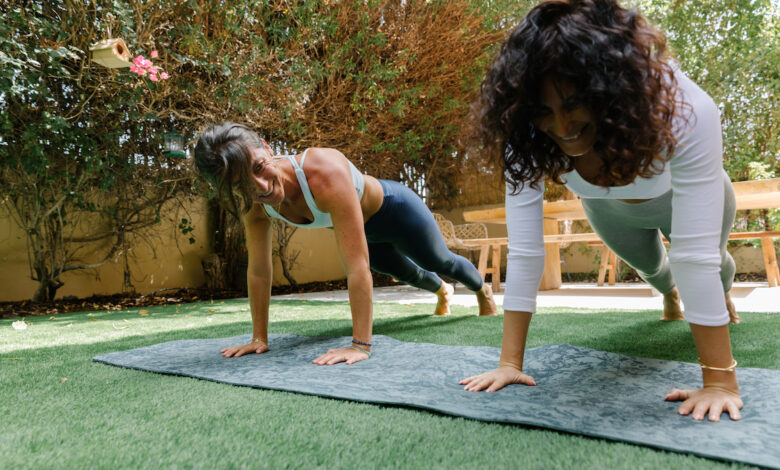The Best Exercise To Relieve Back Pain, Per a Spinal Surgeon

Actually, what Dr. Yanamadala was experiencing was totally normal. Just like a car’s break pads wear down over time, the act of existing and growing older means our spine will experience wear and tear, which can lead to back pain, Dr. Yanamadala says. Sitting (especially sitting with poor posture) for uninterrupted periods of time only intensifies pressure on the joints, which can comprise the spine. So pain resulting from a long commute was no surprise.
The spinal surgeon’s solution was not going to be surgery; it was going to be exercise to relieve back pain. He knew that to support his back, he needed to strengthen his core—and not just the abs, but all the core muscles that wrap around the front and back of the torso.
“The core is basically our internal back brace,” Dr. Yanamadala says. “[The core muscles] support our spine and prevent us from having pain, and allow us to move flexibly.”
While strong core muscles lend the spine support in its job of holding your head and body upright, the opposite is also true. The less core strength you have, the more the spine has to absorb the pressure and shock of movement, which makes it more likely that those joints will give you issues.
“If you don’t have strong back musculature and you haven’t built that internal back brace, then those joints are gonna be doing that work and they’re gonna wear down just like anything else,” Dr. Yanamdala says.
Which is why strengthening your core should be your first line of defense against back pain, and is just what Dr. Yanamadala did himself—and continues to do today.
“Spine health to me is how do we maintain movement flexibility and a pain-free existence despite what is the natural history of general wear and tear on our joints,” Dr. Yanamdala says.
Dr. Yanamadala doesn’t hit the mat and do an intense daily 30-minute core burner. Instead, he tries to do just a couple minutes of core every day; he says aiming for every day means he gets it done around four times a week, which is just fine for him.
The centerpiece of the routine is the plank. Dr. Yanamadala says he is a “big believer in planks” because they engage the full circle that is your core, without requiring any motion in the back. When he first started his daily plank habit, he says he could hold the pose for about 25 or 30 seconds. Now, his record is two minutes, which is what he aims for every time these days.
Finding your own maximum is key, he says. “It doesn’t matter how much you do it for, as long as you are stressing your muscles until fatigue,” Dr. Yanamadala says. “If you do it for 30 seconds, and your muscles are fatigued by the end of 30 seconds, that’s as powerful as me doing it for two minutes. It’s all about how you can fatigue your muscles completely so that they can then start to rebuild.”
Dr. Yanamadala intersperses the planks with dead bugs and sit-ups or crunches to work his core in a few different ways. But you don’t need to do the exact same routine—what’s important is that you find the exercises you will do consistently, and push yourself to your max.
“After I started my core strengthening on a regular basis, it really helped tremendously,” Dr. Yanamadala says. “Movement is medicine.”
Want to start planking for spine health? Here’s how to execute the perfect plank to get the max benefits:
